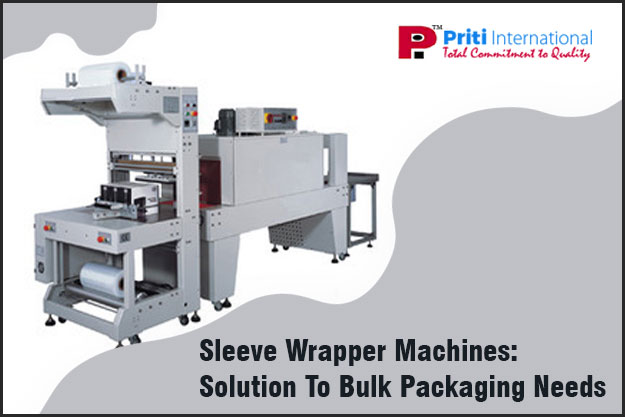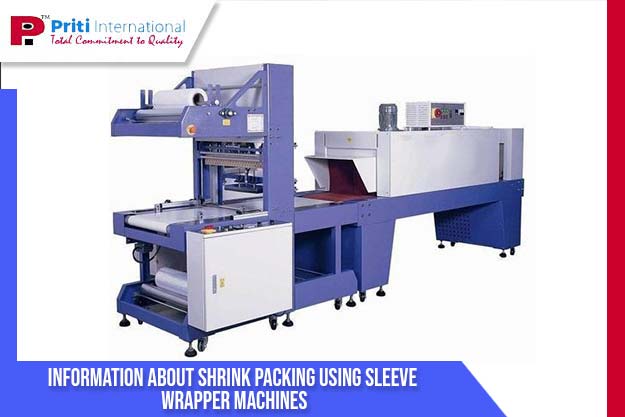Priti International is a leading name in the packaging industry, offering innovative solutions to enhance product safety and efficiency, which specializes in bundled drinking water. The proper bundling innovation plays a vital part in keeping item keenness. One such development is the programmed automatic shrink wrapping machine kolkata, which offers a consistent mix of proficiency, assurance, and upgraded rack life. Here’s how this progressing bundling arrangement changes the way items are conveyed to buyers.
Advanced Item Security with Automatic Shrink-Wrapping Machine in Kolkata
Shrink-wrapping includes firmly encasing an item in a plastic film, which is at that point warmed to shrivel around the thing, shaping a secure, tamper-proof seal. This prepare offers a few securities focal points:
- Tamper-Evident Bundling: The automatic shrink wrapping machine gives clear visual proof if an item has been altered, guaranteeing client certainty.Â
- Security from Contaminants: The tight seal shields items from tidy, earth, and dampness, which is especially vital for consumables like bottled water.Â
- Cleanliness: Programmed shrink-wrapping machines work with negligible human intercession, decreasing the chance of defilement amid the bundling preparation.Â
Elevated Product Durability with Automatic Shrink-Wrapping Machine Shrink-wrapping too plays a basic part in amplifying the rack life of items. Here’s how:
- Boundary Against Natural Components: The plastic film acts as an obstruction against UV beams and discusses, which can debase item quality over time.Â
- Steady Bundling for Long-Term Capacity: By decreasing the introduction to mugginess and temperature variances, shrink-wrapping makes a difference to protect the product’s keenness, indeed in changing capacity conditions.Â
For Priti International’s bundled water, this implies clients get water that remains new and unadulterated for an amplified period.
Cost-Efficiency and Maintainability of Automatic Shrink-Wrapping Machine
Programmed shrink-wrapping machines not as it were upgrade item security but moreover contribute to fetched reserve funds and supportability:
- Diminished Bundling Squander: The exact application of shrivel film minimizes fabric utilization, bringing down bundling costs.Â
- Vitality Productivity: Present day shrink-wrapping machines are planned to expend less vitality whereas keeping up high-speed operation, driving to decreased generation costs.Â
- Eco-Friendly Movies: With the accessibility of biodegradable and recyclable shrivel movies, companies can adjust their bundling forms with supportability objectives.Â
Boosted Generation Productivity with Automatic Shrink-Wrapping Machine
Computerization streamlines the complete packaging process, advertising noteworthy operational benefits:
- High-Speed Operation: Programmed machines can handle huge volumes of items rapidly, decreasing the time-to-market for Priti International’s bottled water.Â
- Steady Quality: Not at all like manual bundling, programmed shrink-wrapping guarantees uniform application, improving the by and large appearance and solidness of the bundling.Â
- Decreased Labor Costs: By computerizing the wrapping handle, businesses can lower reliance on manual labor, reallocating assets to other basic zones.Â
Branding and Advertise Offer with Automatic Shrink-Wrapping Machine Shrink-wrapping doesn’t fairly protect—it moreover upgrades the visual offer of items.
- Clear Item Show: The straightforward film permits customers to see the item while keeping it secure.Â
- Customizable Alternatives: Recoil movies can be printed with brand logos, special messages, or subtle elements, making Priti International stand out on the rack.Â
ConclusionÂ
For businesses like Priti International, contributing to programmed shrink-wrapping machines could be a game-changer. By improving product security, dragging out rack life, and optimizing operational proficiency, these machines not as it were guaranteeing high-quality bundling but moreover bolster trade development. As the request for solid and maintainable bundling arrangements proceeds to rise, shrink-wrapping technology will remain a basic resource within the competitive advertisement.
Priti International, who provides the best automatic shrink wrapping machine Kolkata is committed to leveraging such advancements to convey secure, new, and high-quality bottled water to its clients. Looking to promote your item bundling? Find out how Priti International’s arrangements progressed and can offer assistance to help your trade flourish.




